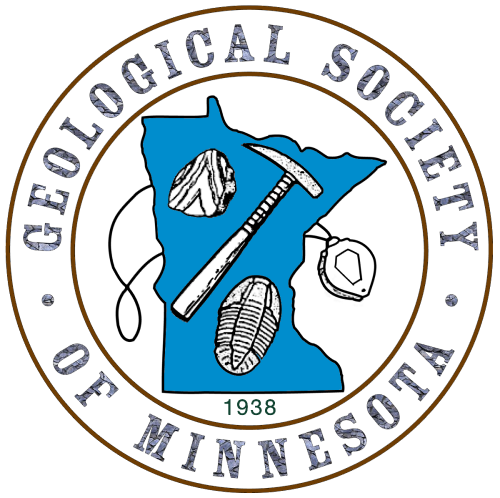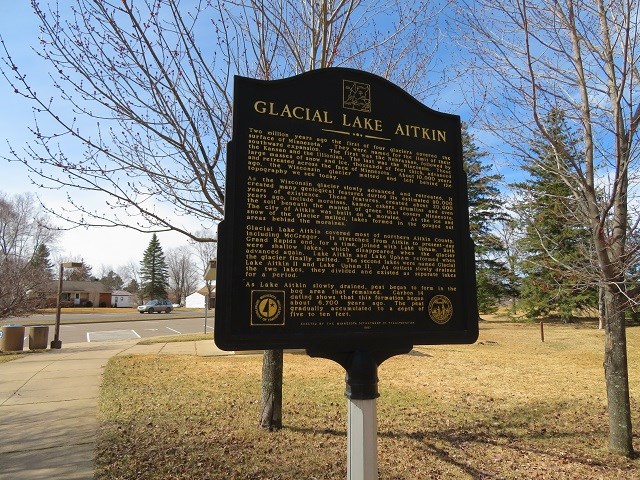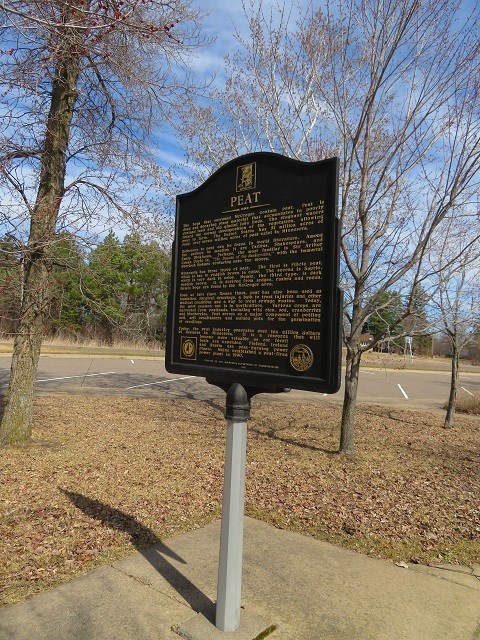Road Marker Information
Description:
Enter Road Address in your cars GPS:
McGregor, MN 55760
OR
Enter Geographical Coordinates in your cars GPS:
Degrees Lat Long: 46.607950, -93.300950
Latitude: 46°36’28.6″N
Longitude: 93°18’03.4″W
Country: Aitkin County
Where Found:
This little rest stop has a 2 sided historical marker: Glacial Lake Aitkin on one side and Peat on the other. In rest area in northern Aitkin County in McGregor MN.
Marker Number:
Marker Composition: Cast Bronze on a post
Text on Marker:
Glacial Lake Aitkin
Two million years ago the first of four glaciers covered the surface of Minnesota. They were named for the limit of their southward expansion. The first was the Nebraskan, followed by the Kansan and the Illionian. The last was the Wisconsin. These large masses of snow and ice, thousands of feet thick, advanced and retreated across the face of Minnesota. About 10,000 years ago, the Wisconsin glacier melted and left behind the topography we see today.
As the Wisconsin glacier slowly advanced and retreated, it created many geological features during its estimated 90,000 years of existence. These features, created about 20,000 years ago, include moraines, kames, eskers, drumlins and even the soil beneath the mantel of green that covers Minnesota. The city of Aitkin was built on a moraine. As the ice and snow of the glacier melted, lakes formed in the gouged out areas behind the moraines.
Glacial Lake Aitkin covered most of northern Aitkin County, including McGregor. It stretched from Aitkin to present-day Grand Rapids and, for a time, joined with Lake Upham. Both were shallow lakes, which disappeared when the glacier advanced again. Lake Aitkin and Lake Upham reformed when the glacier finally melted. The second lakes were named Glacial Lake Aitkin II and Glacial Lake Upham II. As outlets slowly drained the two lakes, they divided and existed as separate lakes for a period.
As Lake Aitkin slowly drained, peat began to form in the bog area that remained. Carbon 14 dating shows that this formation began about 6,700 years ago. The peat gradually accumulated to a depth of five to ten feet.
Peat
The bogs that surround McGregor contain peat. Peat is dead and decaying plant material that accumulates in poorly drained land and old glacial lake beds. The stagnant waters retard the normal decomposition of the vegetation, allowing peat to form. The United States has 51 million acres of peat: over seven million acres of peat exist in Minnesota.
Reference to peat can be found in world literature. Among the authors to mention it are Tacitus, Shakespeare, and Emily Dickinson. Perhaps, the most familiar is Sir Arthur Conan Doyle in, “The Hounds of the Baskervilles,” with the immortal Sherlock Holmes venturing onto the moors.
Minnesota has three types of peat. The first is Fibric peat, which is tan to reddish brown in color. The second is Sapric, which is very dark in color. Hemic, the third type, is dark reddish brown; it is derived from sedges, rushes and reeds. Hemic bogs are found in the McGregor area.
Used as fuel since Roman times, peat has also been used as insulation, surgical dressings, a bath to treat injuries and other medical conditions and a way to treat sewage wastes. Today, the most common use is in horticulture. Various crops are harvested from peatlands, including wild rice, sod, cranberries and blueberries. Peat serves as a major component of potting soil, soil conditioners and molded pots for the germination of seedlings.
Today, the peat industry generates over ten million dollars of business in Minnesota. It is a resource that will become more valuable as our fossil fuels are expended. Finland, Ireland and Russia use peat-burning power plants. Maine established a peat-fired power plant in 1990.
Erected 1997 by The Minnesota Department of Transportation
| Marker Type:: Roadside |
Region: Northeast Region
Information Needed:
- Marker Images
Condition of Marker: Good
Do it Yourself Region: Brainerd-Mille Lacs , Iron Range





